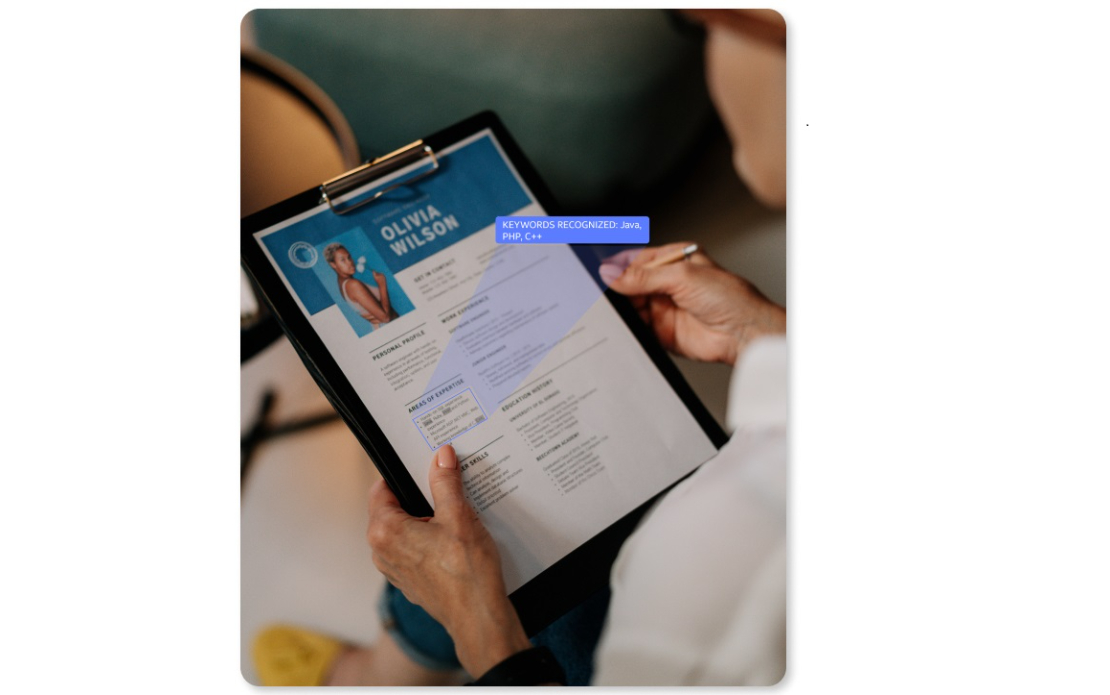Dec 14, 2021
No image

Service categories
Service Lines
Artificial Intelligence
Software Development
Domain focus
Business Services
Technology
Programming language
Python
Frameworks
TensorFlow
Torch/PyTorch
Challenge
The client is a Dublin-based startup that develops an AI-powered talent recommender engine for HR tech vendors, enterprises, and staffing agencies.
The client wants to develop a resume parser and summarizer to work with unstructured CVs in document form, sent by candidates in various formats. The engine is supposed to extract all important information about the candidates, including personal information, level of seniority, years spent with different companies, and experience with different skills. Finally, the engine should summarize everything about the client in a short, generated paragraph.
They reached to BroutonLab to develop a custom engine with a relatively small labeled training dataset.
The client is a Dublin-based startup that develops an AI-powered talent recommender engine for HR tech vendors, enterprises, and staffing agencies.
The client wants to develop a resume parser and summarizer to work with unstructured CVs in document form, sent by candidates in various formats. The engine is supposed to extract all important information about the candidates, including personal information, level of seniority, years spent with different companies, and experience with different skills. Finally, the engine should summarize everything about the client in a short, generated paragraph.
They reached to BroutonLab to develop a custom engine with a relatively small labeled training dataset.
Solution
The final solution can be broken down into several problems:
- Named Entity Recognition
- Automatic Salary Prediction
- Resume Summarization
Within the scope of the project, 2 types of information were analyzed:
- Resumes
- Job posts
Resumes and job posts were taken from public job boards and paying clients. The labeling of these documents was performed by using the outputs of several commercial resume/job post parsers.
To resolve different NLP problems, we used stacked bidirectional GRU/LSTM recurrent layers. We experimented with different vector embeddings including fastText and custom Word2vec.
We used GoLang for the deployment of developed neural networks. The communication between different services was achieved using the gRPC protocol.
The final solution can be broken down into several problems:
- Named Entity Recognition
- Automatic Salary Prediction
- Resume Summarization
Within the scope of the project, 2 types of information were analyzed:
- Resumes
- Job posts
Resumes and job posts were taken from public job boards and paying clients. The labeling of these documents was performed by using the outputs of several commercial resume/job post parsers.
To resolve different NLP problems, we used stacked bidirectional GRU/LSTM recurrent layers. We experimented with different vector embeddings including fastText and custom Word2vec.
We used GoLang for the deployment of developed neural networks. The communication between different services was achieved using the gRPC protocol.
Results
The client received an end-to-end solution for automated resume parsing and summarization, allowing them to grow 20% in market share and start working with larger clients, where the percentage of clients being Fortune 100 companies grew to 80%. After a while, the startup was successfully acquired by a large US cloud talent platform, launching a new AI solution within a larger organization.
The client received an end-to-end solution for automated resume parsing and summarization, allowing them to grow 20% in market share and start working with larger clients, where the percentage of clients being Fortune 100 companies grew to 80%. After a while, the startup was successfully acquired by a large US cloud talent platform, launching a new AI solution within a larger organization.
